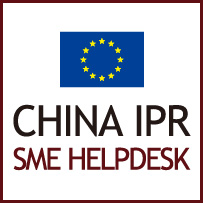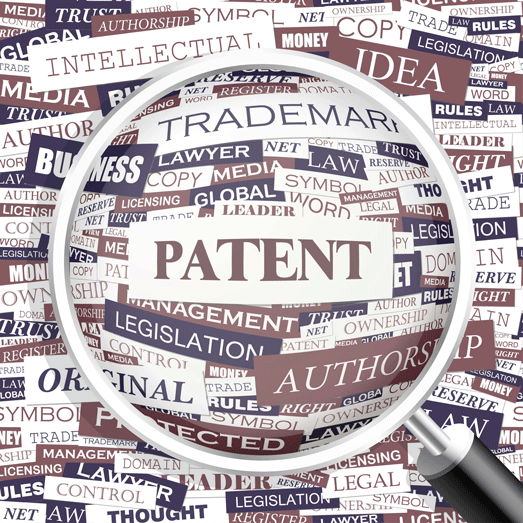In the following article experts from the China IPR SME Helpdesk plot the development of China’s treatment of intellectual property (IP) over the past four decades.
They find that although a huge amount of progress has been made over a short period of time, there is still plenty of room for improvement.
The People’s Republic of China (PRC) started to develop its IP system relatively late, during the very early stages of China’s reform and opening up to the outside world. It was recognised by early reformers as essential for development in areas such as science and technology, and an incentive to spur creativity. Despite the volume of infringement claims made by foreign companies and some very high profile law suits, China does have an interest in IP and very few countries, if any, can boast the speed of progress that China has made in IP since joining the World Intellectual Property Organisation (WIPO) 35 years ago.
Last year, China was the highest receiver of patent applications globally. The number of invention patent applications received by China’s State Intellectual Property Office (SIPO) stood at 928,000, an increase of 12.5 per cent from 2013. This follows a trend of double-digit percentage increases over the last four years, which suggests that China is taking Intellectual Property Rights (IPR) seriously and the government’s priority for boosting innovation by improving IPR protection is paying off.
After joining the WIPO in 1980, a vast amount of ground was covered over the next 20 years, starting with the adoption of the PRC Trademark Law in 1983, and followed two years later with the adoption of the Patent Law, signalling the establishment of China’s modern legal system for the protection of IPR.
Further down the line in 1985, China became a member of the Paris Convention for the Protection of Industrial Property. The following year the General Principles of the Civil Law of the PRC were promulgated, coming into effect in 1987. This legislation clearly marked IPR in China’s basic civil law as the civil right of citizens and legal persons, therefore confirming to Chinese citizens—for the first time—the right of authorship.
Later on in 1989, China became a member of the Madrid Agreement for the International Registration of Trademarks, which is the main international system for facilitating the registration of trademarks in various jurisdictions globally.
The Copyright Law was adopted in 1991, and in 1992 the Chinese Government acceded to both the Berne Convention for the Protection of Literary and Artistic Works (Berne Convention) and to UNESCO’s Universal Copyright Convention. China’s IPR laws have been modelled on the Berne Convention as well as the Agreement on Trade-Related Aspects of Intellectual Property Rights (TRIPS), which they joined in 1994.
China’s Law on Combating Unfair Competition and the Patent was adopted in 1993, and in 1994 China became a member of the Patent Cooperation Treaty to the WIPO. China also entered into a memorandum of understanding with the United States (US) in 1992, over copyright protection for all American and foreign works, which has been revised over the years, as well as several other bilateral negotiations between the two governments over the years.
Above are just a handful of accounts of China’s IP legislation and its participation in various agreements and organisations in relation to IP, demonstrating the importance that China has put on protecting IP not only within China, but also abroad as well. However, despite China’s active involvement in international negotiations, issues surrounding infringement still exist – this is especially true for trademark and copyright. This may be due in part to the relatively short time that IPR has been in place in China, and for that reason a proportion of the population still have an incomplete understanding of IPR. This is gradually improving, for example, after changes made to the Patent Law in 1992, the revisions were disseminated to the public via classes, training programmes and forums all provided by the local governments throughout the country. It is also perhaps fair to say that it is often the differences in IP systems between China and Europe that trip up some foreign companies.
In terms of trademarks and patents, China operates under a first-to-file jurisdiction, whereas Europe uses a first-to-use system, meaning that if a Chinese company, or any company for that matter, registers a trademark in China first, they are the legal holders of that trademark: buying back that trademark can be very costly. Another difference to take into consideration is that IP is territorial, which means that IP registered in Europe does not guarantee protection in China and any IP registered in the PRC is not protected in Hong Kong, Taiwan or Macao, which all have separate legal systems. As for copyright, like Europe automatic rights are granted to the creator of a piece of work but it is advisable to register as proof.
To date, the government has reacted quickly to any changes in the business environment that may have an effect on IP, such as the announcement last month of the drafting of the first e-commerce law to crack down on infringement on online platforms such as Alibaba.com and Taobao. Both sites are unfortunately being used by businesses for illegal activity, including trademark violation and copyright infringement, something that was brought to light after Alibaba’s IPO in September last year.
For any company wishing to conduct business in China it is essential to fully realise the importance of having a good understanding of protection and valuation of IP assets, as well as having knowledge of IP systems in different countries and regions. Considering China has only been recognising IPR for the last four decades, their current status as being the largest recipient of patents worldwide is staggering and shows that China is keen to improve on existing IP laws and practices. This at least should inspire some confidence in European businesses thinking about entering China and reassure them that if they take the available steps to protect their assets it will more often than not pay off.
 The China IPR SME Helpdesk is a European Union co-funded project that provides free, practical, business advice relating to China IPR to European SMEs. To learn about any aspect of intellectual property rights in China, including Hong Kong, Taiwan and Macao, visit our online portal at www.china-iprhelpdesk.eu. For free expert advice on China IPR for your business, e-mail your questions to: question@china-iprhelpdesk.eu. You will receive a reply from one of the Helpdesk experts within three working days. The China IPR SME Helpdesk is jointly implemented by DEVELOPMENT Solutions, the European Union Chamber of Commerce in China and European Business Network (EBN)
The China IPR SME Helpdesk is a European Union co-funded project that provides free, practical, business advice relating to China IPR to European SMEs. To learn about any aspect of intellectual property rights in China, including Hong Kong, Taiwan and Macao, visit our online portal at www.china-iprhelpdesk.eu. For free expert advice on China IPR for your business, e-mail your questions to: question@china-iprhelpdesk.eu. You will receive a reply from one of the Helpdesk experts within three working days. The China IPR SME Helpdesk is jointly implemented by DEVELOPMENT Solutions, the European Union Chamber of Commerce in China and European Business Network (EBN)



Recent Comments